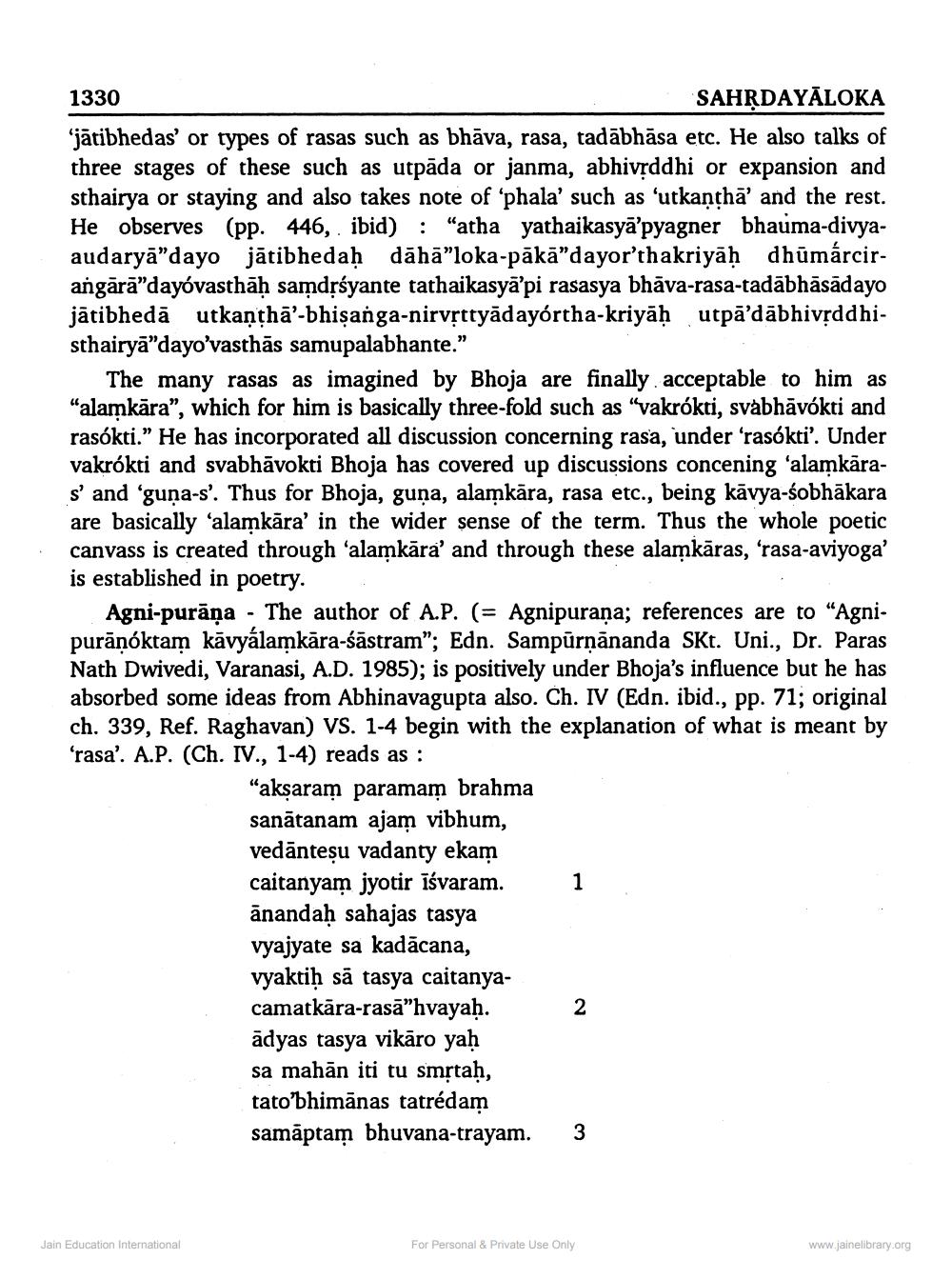________________
1330
SAHRDAYĀLOKA 'jātibhedas' or types of rasas such as bhāva, rasa, tadābhāsa etc. He also talks of three stages of these such as utpāda or janma, abhivrddhi or expansion and sthairya or staying and also takes note of 'phala' such as 'utkanthā' and the rest. He observes (pp. 446,. ibid): "atha yathaikasya'pyagner bhauma-divyaaudaryā"dayo jātibhedaḥ dāhā”loka-pākā”dayor'thakriyāḥ dhūmárcirangārā”dayóvasthāḥ samdrśyante tathaikasyā’pi rasasya bhāva-rasa-tadābhāsādayo jātibhedā utkanthā’-bhişanga-nirvṛttyādayórtha-kriyāḥ utpā’dābhivrddhisthairyā”dayo'vasthās samupalabhante."
The many rasas as imagined by Bhoja are finally acceptable to him as "alamkāra", which for him is basically three-fold such as "vakrókti, svabhāvokti and rasókti.” He has incorporated all discussion concerning rasa, under 'rasókti'. Under vakrókti and svabhāvokti Bhoja has covered up discussions concening 'alamkaras' and 'guna-s'. Thus for Bhoja, guna, alamkāra, rasa etc., being kāvya-sobhākara are basically ‘alamkāra' in the wider sense of the term. Thus the whole poetic canvass is created through 'alamkāra' and through these alamkāras, 'rasa-aviyoga' is established in poetry.
Agni-purāņa - The author of A.P. (= Agnipurana; references are to “Agnipurāņóktam kāvyálamkāra-śāstram"; Edn. Sampūrņānanda SKt. Uni., Dr. Paras Nath Dwivedi, Varanasi, A.D. 1985); is positively under Bhoja's influence but he has absorbed some ideas from Abhinavagupta also. Ch. IV (Edn. ibid., pp. 71; original ch. 339, Ref. Raghavan) VS. 1-4 begin with the explanation of what is meant by 'rasa'. A.P. (Ch. IV., 1-4) reads as :
"akşaram paramam brahma sanātanam ajam vibhum, vedānteșu vadanty ekam caitanyam jyotir īśvaram. 1 ānandah sahajas tasya vyajyate sa kadacana, vyaktih sā tasya caitanyacamatkāra-rasā”hvayah. 2 ādyas tasya vikāro yaḥ sa mahān iti tu smrtah, tato bhimānas tatrédam samāptam bhuvana-trayam.
Jain Education International
For Personal & Private Use Only
www.jainelibrary.org




